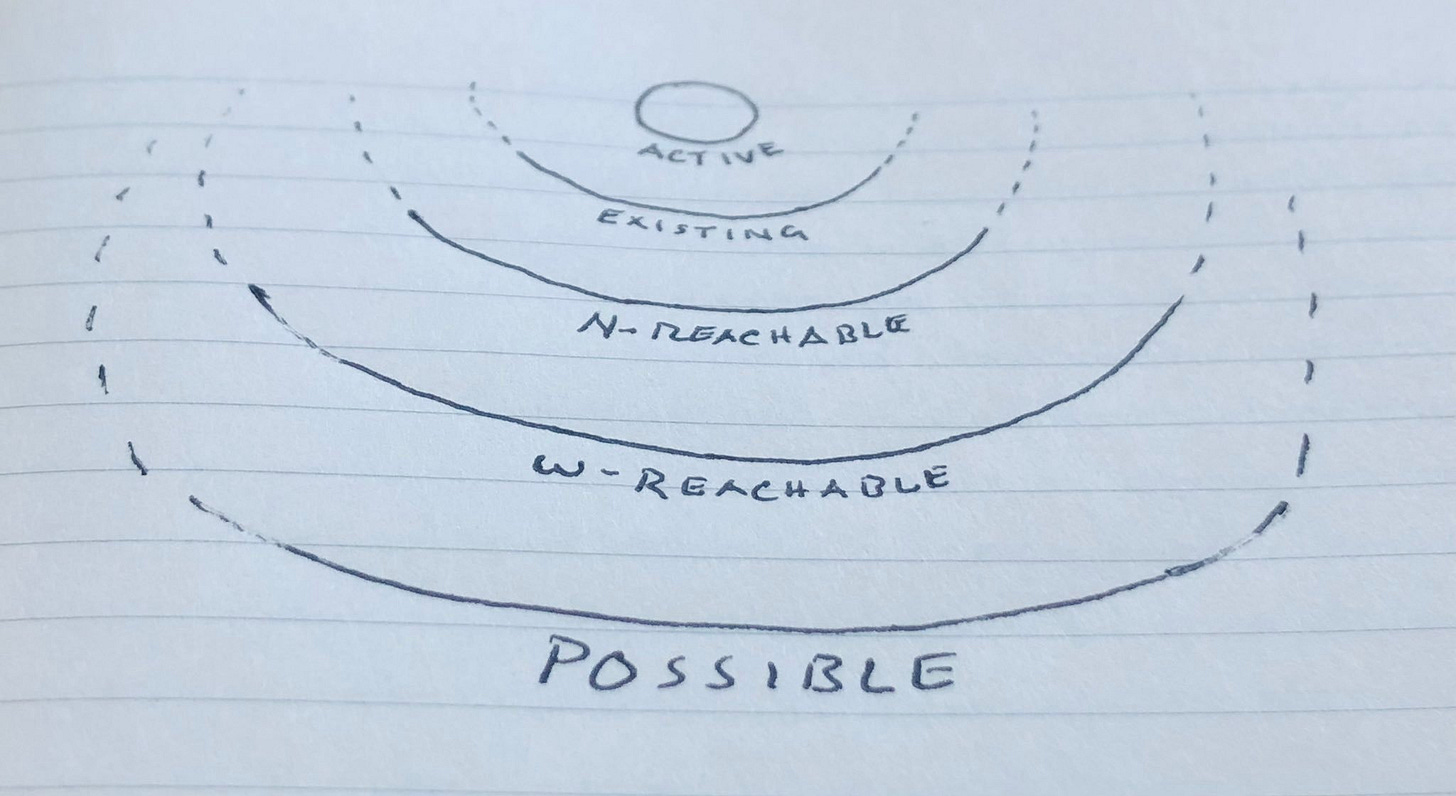The Five Nested Sets of the Mind
Zooming out from one thought to all possible thoughts
When thinking about the mind, it's helpful to consider five nested sets, where each one is a subset of the next:
Active ⊆ Existing ⊆ N-Reachable ⊆ ω-Reachable ⊆ Possible
1. Active. The set of things currently active in the mind. This is usually a tiny set, focused only on what's relevant at any given moment. The fact that we can focus like this helps us solve problems more efficiently than just trying things at random.
2. Existing. All the knowledge in the mind. Many of these things haven't been used in years, but they're in there, and might be used if they suddenly become relevant. Ideally, you'd have vast knowledge, and know exactly when to use each thing - when it should become active.
3. N-Reachable. All the knowledge you don't yet have, but might reach in N steps. e.g. All the things that are one thought away, say. The point here is that many things are just a few thoughts away. Also, if your mind contains good ideas, then many improvements might be just a few steps away.
4. ω-Reachable. All the things you can ever reach, given unlimited time and resources. The point here is that the human mind might be able to create any thought, while AIs or raccoons might never reach those things, even with infinite time. (The symbol ω is "omega" and refers to infinity.)
5. Possible. All the things that are possible in reality. Some systems can do all these things - perhaps we humans can. If the set is finite, then there is a best possible state, and things can never improve after that. If the set is infinite, then perhaps things can get better forever.


Nice hierarchy. Have you read David Deutsch’s The Beginning of Infinity? He makes a compelling case, grounded in mathematics of Church-Turing-Deutsch principle, for why people, in your system, are capable in theory of all possible thoughts.